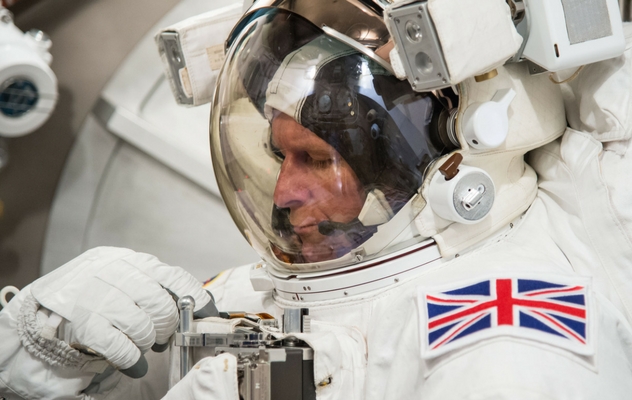Exploring the geometry and measures of space exploration

Given he was about as far away from Earth as anyone could be for half of the year, it was hard to escape from Tim Peake in 2016. Whilst the news coverage brought his journey into homes across the country, his mission also had a presence in my mathematics classroom.
In December 2015 the Principia mission launched. Tim boarded a Soyuz rocket bound for the International Space Station (ISS). It was a landmark in British space exploration. He was the first ‘official’ British astronaut, and the first Brit to complete an eventful 4 hour 43 minute spacewalk.
The mission was named after Isaac Newton’s Naturalis Principia Mathematica, which described the principal laws of motion and gravity. Space exploration, and Tim’s mission in particular, provided a great opportunity to teach mathematics curriculum topics such as speed, distance and time in an engaging context.
But before getting to that, let’s go back to 1999. The £78m Mars climate orbiter - designed to monitor the Martian climate, atmosphere and surface changes - was completing its nine month voyage when communication was lost.
The orbiter? Destroyed. The reason? A failure to convert from imperial to metric units. The message for my mathematics students? If you don’t have a head for measures, you’ll never work in the space industry, let alone become an astronaut.
The ISS is much closer than Mars, and much closer than you might think, in orbit roughly 240 miles from the Earth’s surface. It took Tim Peake (and his two colleagues, American Tim Kopra and Russian Yuri Malenchenko) six hours get there. My students calculated that that’s an average 40 miles per hour, my rundown old car can go faster than that, so what’s going on?
After a bit of class discussion, a few ideas emerged. Firstly, that the ISS is moving, and fast.
“If the Soyuz capsule headed straight for it, there wouldn’t be much of it left once it got there, would there sir?”
Instead, our three astronauts circled and circled the Earth, gaining speed and height until they eventually caught up to the ISS and docked. That grainy docking footage shown on the news? They’re going 17,150 mph. That is, and this is possibly the best sentence I’ve ever uttered in a classroom, ten-times-faster-than-a-speeding-bullet!
It can be hard for students to visualise such large measurements. A handful of plastic cups and ten minutes later, we had explored the relative distances when travelling to Edinburgh, to the ISS, and to the moon. Next we explored different ways of measuring these distances. If we piled up the textbooks, how many would we need to get to there? How many people on each other’s shoulders would we need? What is a kilometer anyway?
Inspired by these initial discussions, and the Principia Mission, we also explored the circumference of the Earth, which is roughly 25,000 miles, (an interesting figure in comparison to the annual mileage of my car).
“So on the ISS, how much further do you travel in one rotation? What is that as a percentage of the Earth-bound distance?!” I asked.
The more we discussed, the more questions came to mind:
- The ISS orbits the Earth 16 times a day. What is the speed? Over a six-month mission, how many orbits is that? How many miles is that in total?
- What about coming back? What is the speed of the ISS when it returns to Earth? How does that compare to a car crash? Ouch.
As for teaching measures, it’s gone from a topics I enjoyed covering least, to one that continues to engage, inspire and throw up and whole range of interesting ideas.
All of the ideas discussed above, and more, can be found in the Principia Mission - maths in space resource.

